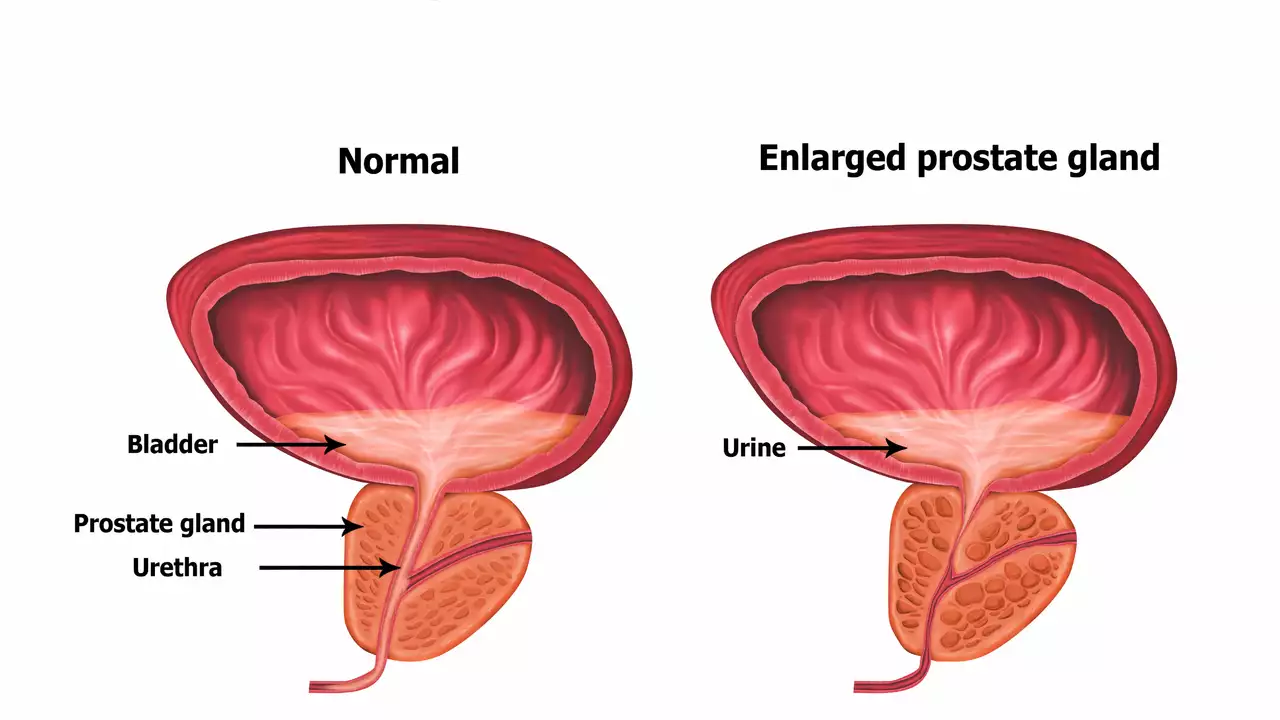Benign Prostatic Hyperplasia (BPH): What It Is and How to Deal With It
If you’ve noticed more trips to the bathroom at night or a weak stream when you pee, BPH might be why. Benign prostatic hyperplasia is simply a non‑cancerous growth of the prostate gland that pushes against the urethra. The result? Pressure on the bladder and trouble emptying it fully. It’s extremely common after age 50, affecting up to half of men by their seventies.
What Causes the Prostate to Grow?
The exact trigger isn’t crystal clear, but hormones play a big role. As you get older, the balance between testosterone and estrogen shifts, nudging prostate cells to multiply. Lifestyle factors like obesity, lack of exercise, and a diet high in red meat can speed things up. Genetics also matter – if your dad or granddad dealt with BPH, chances are higher for you.
Spotting the Typical BPH Symptoms
The warning signs usually involve how often and how easily you pee. Common complaints include:
- Frequent urination, especially at night (nocturia)
- A sudden urge to go that’s hard to control
- Weak or interrupted urine flow
- Feeling like the bladder isn’t empty after you finish
- Dribbling after you think you’re done
If any of these sound familiar, a quick visit to your GP can confirm whether BPH is behind them.
Simple Lifestyle Tweaks That Help
You don’t always need medication right away. Small changes often make a big difference:
- Cut back on caffeine and alcohol – both irritate the bladder.
- Stay hydrated, but avoid large drinks before bedtime to reduce nighttime trips.
- Exercise regularly. Even a 30‑minute walk can improve circulation and hormone balance.
- Maintain a healthy weight. Extra belly fat puts pressure on the pelvic area and worsens symptoms.
These habits not only ease BPH discomfort but also boost overall health.
When Medication Becomes Necessary
If lifestyle tweaks aren’t enough, doctors often start with prescription drugs. Alpha‑blockers like tamsulosin relax the prostate muscle, making it easier to pee. 5‑alpha‑reductase inhibitors such as finasteride shrink the gland over months. Both have side effects, so your doctor will weigh risks versus benefits based on how severe your symptoms are.
Non‑Surgical Options Worth Knowing
For men who can’t take medication or prefer a less invasive route, there are alternatives:
- Minimally invasive thermal therapy (MITT) uses heat to reduce excess tissue.
- Prostatic urethral lift inserts small implants that keep the urethra open.
These procedures usually happen in an outpatient setting and have quick recovery times.
When Surgery Is the Last Resort
If the prostate grows so large it blocks urine flow completely, surgery may be needed. The most common method is transurethral resection of the prostate (TURP), where a small instrument removes tissue through the urethra. Newer laser techniques can do the same job with less bleeding.
Even though surgery sounds scary, modern methods are safe and effective for men with severe obstruction.
Keeping Track of Your Progress
The best way to know if a treatment works is by monitoring symptoms. Keep a simple diary: note the time you wake up, how many times you go at night, and any changes in stream strength. Bring this log to each doctor visit – it helps fine‑tune therapy without unnecessary tests.
Bottom line: BPH is common, but it doesn’t have to control your life. Simple lifestyle tweaks, timely medical advice, and the right treatment plan can keep you comfortable and confident.

As a blogger, I've been exploring the impact of Benign Prostatic Hyperplasia (BPH) on men's quality of life. BPH is a common condition in older men where the prostate gland enlarges, causing a range of uncomfortable urinary symptoms. It's more than just a physical discomfort, it also significantly affects one's emotional well-being, with constant worry and fear of public embarrassment. It can interrupt sleep, lead to anxiety and depression, and hinder social interactions. In essence, BPH isn't just a health issue, but a comprehensive lifestyle concern that needs timely attention.
Read More